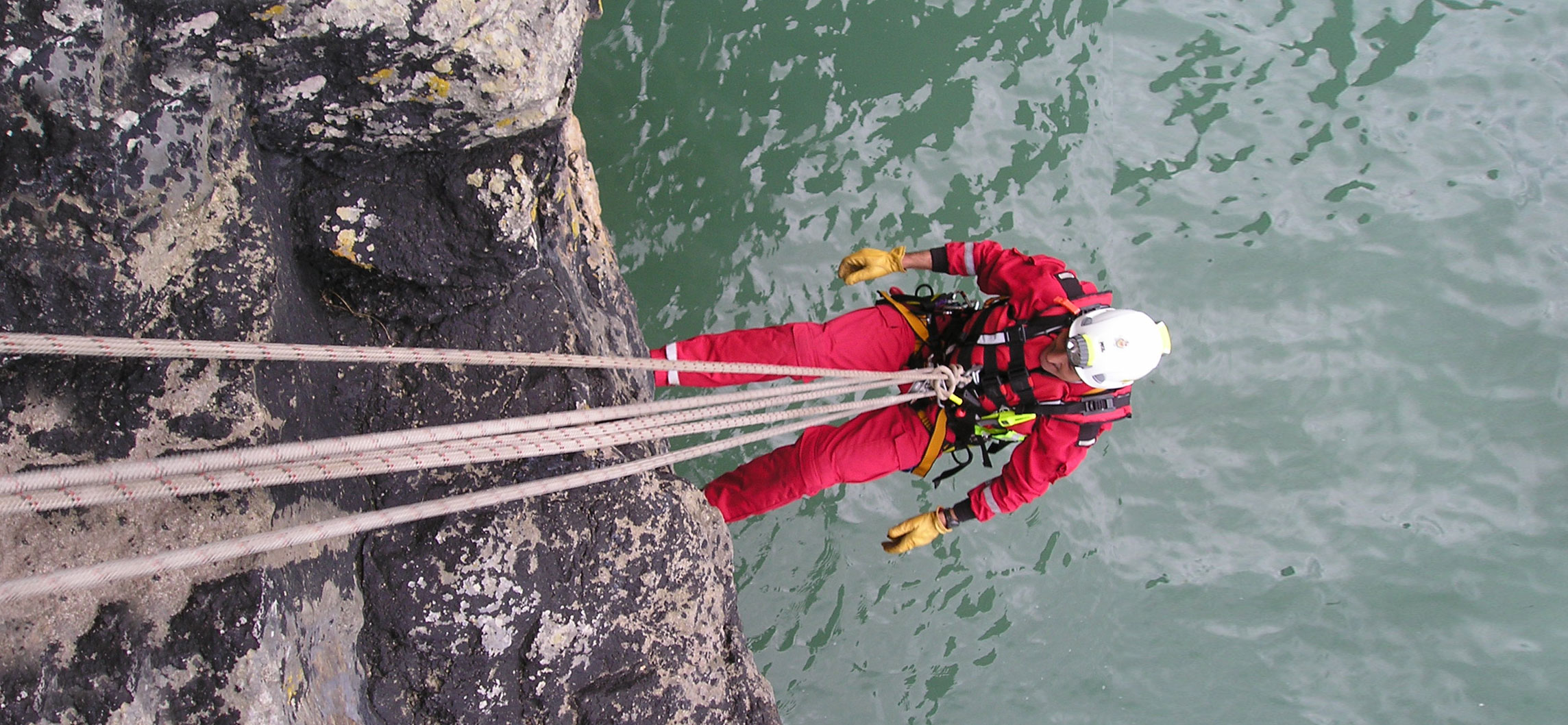Outreach Industrial Training for Marine, Offshore and Wind Energy Industries
We are a City and Guilds accredited training centre covering all aspects and categories of Confined Spaces. As well as standard programmes, courses can be designed to meet your exact requirements, and provide you with realistic and practical solutions to the problems you face.
Casualty care programmes are available with accreditations appropriate to your needs. All meet current legislative requirements, and are delivered through theoretical and highly practical sessions guaranteed to increase confidence and practical ability. The environments workers in this business find themselves in can be some of the most remote and difficult of any Industry, we can give you the specific skills needed to cope with them. Our training is not the average, we are specialists in Hazardous environments and in the challenges they bring.
Rescue and Safety Team Training is also available, where we provide elements of all rescue disciplines in one programme. We bring together rope, confined spaces, casualty care and, if appropriate, water safety, into a focussed and practical course, almost entirely scenario based, that will hone existing skills and provide the essential rescue element missing in standard training. Courses can also be designed to your exact requirements to ensure you get the focus you need to deal with your own, unique, situation.
We have over 20 years experience in delivering rescue and safety training, all our tutors have worked for many in Industrial, Emergency Services or Military rescue before joining us, and we hold national accreditations in all disciplines. Our standards are high because they reflect our understanding that your environment and problems are often very difficult, we guarantee to go the extra mile to help you deal with it.
Setting Standards, Verifying Standards and Maintaining Standards
Training in specialist rescue, which forms the largest part of our business, has evolved from a series of loose guidelines and regulations fifteen or so years ago to the current increased focus on a consensus set of contents, standards and expectations.
Training in specialist rescue, which forms the largest part of our business, has evolved from a series of loose guidelines and regulations fifteen or so years ago to the current increased focus on a consensus set of contents, standards and expectations.
With the increased detailing of good practice there are now developed/developing sets of national standards to which governance and compliance within the UK can be applied.
Whilst some gaps still remain, there are continuing requirements for training providers to identify appropriate sources to use as benchmarks and devise role related skill combinations and appropriate training and assessment methods.
Technical standards are but one aspect of the delivery of good training. The provision of a technical specification is in no way a guarantee that the delivery of that training will be such as to ensure learning, consolidation and detailed assessment to an appropriate standard.
At Outreach we developed the first line of external verification of our training standards with the three-way partnership between ourselves, Coventry University and the Fire Service College, which has now been in place since the early nineties. However, about ten years ago, we started to add additional levels of sector specialist verification processes within our structure, which along with our client consultation process is used to develop a culture of constructive critical appraisal.
This was not introduced solely as an initiative to sustain quality but was, in part, as a consequence of a rising litigation culture within our increasingly risk averse environment.
We have reaped the benefits of additional layers of expertise and the checks and balances they brought even though occasionally we may feel that they are time consuming and costly to resource. The structure of our verification process involves a rolling review of every programme on (normally) a two-year cycle. Individual sections of each course are defined and independent organisations or individuals with appropriate sector specialist knowledge, skills and experience are engaged in the review process.
One of the benchmark standards that have always been considered are the NFPA Standards, which, though of the highest quality for their particular application in North America are only partially relevant to requirements in the UK. In 2007 we undertook a review of the problems inherent in international application of these standards with the chair of the NFPA technical search and rescue committee concerning both the current application of NFPA standards and future considerations for amendments. Two members of Outreach staff are currently members of the NFPA Technical committee for Technical Rescue.
The NFPA standards, along with all others, are only as good as the verification and governance of their application. The NFPA provides a set of standards but all verification and compliance responsibility rests with the commissioning ‘authority having jurisdiction’, i.e. in the UK typically a Chief Officer, Director or similar.
There are equivalent issues with regard to the medical content of training courses and whilst these are frequently referred to as included in programme content, they are often only loosely detailed. Outreach Rescue has a medical faculty of Doctors and specialist Paramedics that continually review and inform this element of our work to ensure the highest standards are maintained.
Our assessment processes follow National Vocational Qualification guidelines with all candidates being assessed against an agreed standard of competence using multiple evidence and a range of assessment methods. This system is then documented through a record of performance which provides the basis for ongoing training and development.
We believe it is vital that these structures are in place both for our own and our client’s continuing confidence in what we deliver. It seemed an obvious tactic to develop a structure based upon sector expertise, which would support the overall accreditation provided by the Fire Service College and Coventry University.
We look forward to the further definition of standards of technical content. The audit and verification process here described will nonetheless remain at the heart of our quality system to ensure appropriate compliance and the maintenance of standards.
Training managers clearly have a substantial legal responsibility to validate their training provider’s internal and external verification processes and we welcome any such enquiry.
Working at Height Connectors by George Smith
Even those of use with a less than Newtonian understanding of gravity all tend to agree that “it’s not the falling – it’s the stopping” that hurts. Perhaps we should ....stop for a few moments, and consider deceleration and the potentially baffling world of personal safety connectors in general.
Even those of use with a less than Newtonian understanding of gravity all tend to agree that “it’s not the falling – it’s the stopping” that hurts. Perhaps we should ....stop for a few moments, and consider deceleration and the potentially baffling world of personal safety connectors in general.
The variety of available products increases all the time adding to the complexity of choice. Whilst the developments in gear testing throw up new elements to the equation.
It would be great if we could just connect ourselves to anchorages with a big strong bit of cable rope or webbing sling. Unfortunately the stronger things are, the less dynamism they possess, so the falling operator stops – and promptly snaps! (Or as recent tests have shown, they may put huge shock loads on the anchorage).
Cumbersome though they are – fall arrest lanyards are the equipment of choice for anyone in any doubt as to the consequence of a fall (having said which their ingenious one-use-only dynamism will, whilst decelerating you effectively fail to stop you colliding with any surrounding bits of structure!)
Their unzipping stitch-packs will prevent a “snap” so long as operators understand all conceivable users, and miss-uses. (Their usage is not confined to industry – thousands are utilised every day on the rigid rungs of alpine “via ferrata’s” – so interest in their refinements will be ongoing.
So why don’t rope access/rescue specialist use them for every task? Hopefully because they understand the principles of dynamism that allow for a different set of choices, so long as the dynamism is available elsewhere. This is afforded in a couple of ways. One, operators may be attached to well positioned quantity of rope with sufficient inherent stretch, or, two, they may be able to connect to a security point at chest – level or above.
The rope options may encompass ascent of descent, operator controlled or otherwise. They could include the provision of a rope and travelling “lock” system protecting the ascent of ladders or steel structures.
Those simply connecting to a high well placed security point, are able to use short lengths of dynamic rope. New tests (Lyon) have shown that these should be constructed with knots rather than any kind of neat looking sewn termination because they outperform them for bounce. The less obvious advantage these skinny bits of rope is that it is no trouble to carry three, permanently fitted. So the more complicated the manoeuvre the greater versatility and system redundancy. A good example here, would be the connectors available. The more complex these sort of manoeuvres are, the simpler the connection systems need to be to avoid confusion.
The increasing prevalence of cam-adjusted connectors simplifies basic work, enabling operators to micro adjust their equipment. But over-reliance on these new systems at an advanced level can generate complex and bulky rigging systems on which it is harder to carry-out pre-use safety checks. A balance must be struck after the full range of possible uses are taken into account.
Whilst much of the focus is rope rescue training is on the safety of “rescue loads” (rescuer and casualty, half of the work entails the management of edge safety for those positioned on building roofs and natural cliff tops. In theory they could be protected with a single-rope restraint system, but a realistic analysis of their role would suggest a progression to “doubled-up” work positioning systems allowing them to take greater advantage of their position as communicators and edge managers.
Clear as mud? It’s a complicated business, a developed understanding of the principles and full compliance with guidance and legislation being a work in progress. If anyone is in doubt then they should perhaps default to full-blown fall-arrest lanyard systems. Mind you – if they are in doubt – they probably shouldn’t be up there!!
George Smith
Outreach
Top tips from the Outreach Bariatric Workshop
Following a successful Bariatric Worskhop please see our notes and top tips for Blue Light services.
Following a successful Bariatric Worskhop please see our notes and top tips for Blue Light services.
In the majority of cases (depending on Casualties individual medical conditions) it is far better to keep the casualty sitting up – laying them down immediately adds pressure to their lungs and constructs breathing.
Dr suggested keeping a load of old Seat Belts in the vehicle as they are useful for use as “handles” for lifting.
Using humour is good, BUT always laugh with the casualty not at them.
Simple use of bed sheets is the easiest way of getting people downstairs.
If the casualty is in the bath, add a small amount of water to help “float” them slightly just to help manoeuvre straps under them.
Plan ahead – ring the hospital well in advance to let them know you will be on the way to them so they have time to prepare a Bariatric bed, lifting kit (in case it needs to be acquired from a different hospital)
Never, ever, put your feet under the edge of the bed when you are preparing to lift the casualty off the bed, if it collapses on your foot you will be in trouble!
If you can, try and obtain a list of Bariatric patients from your local hospital care trust so you can carry out a Risk Assessment and formulate an evacuation plan in advance. You may also like to involve a structural engineer as part of this process. NOTE, if you are told you cannot have this information due to “data protection”, if the casualty signs something to say this is ok, you can get their name and address.
IMPORTANT – check the carrying load of your Long Boards
Try and get more information up front prior to attending, ask control to find out where they are in the house, which room, floor etc.
When considering structural loading, don’t think in terms of 100kg in body weight, think in terms of a Smart Car.
Simple solution to floor loading, transfer the load by adding a couple of Acro props along a 4x4 timber. Don’t forget to replicate this below to cover the transferred load.
Always remember to look around the whole building before you go in to assess additional stresses on the building to spot opportunities to share the load.
When moving casualties, try and use a blanket or small duvet to wrap them in first before putting them in a Slix to provide added protection. REMEMBER to ask the obvious first – ask if the casualty is able to help move themselves with support from the team BEFORE calling in the cavalry!
Always explain to the casualty what you are doing and involve them in the conversation – do not have a conversation about them.
Set a base line pulse at the beginning of the extrication so when you take it again later your know if it has changed
Pre-plan the extrication – you don’t want to end up with your troops at the top of the stairs behind the casualty when you need them at the bottom to help receive the casualty. Remember to measure the openings before you start moving.
Consider boarding stairs and “sliding” casualties (incline plane).
Industrial Safety Teams
Outreach Industrial Safety and Rescue can provide the most well trained, experienced and equipped safety teams available in this sector.
Outreach Industrial Safety and Rescue can provide the most well trained, experienced and equipped safety teams available in this sector.
All staff are fully qualified to the highest national standards, with ongoing continuing professional development and operational experience keeping skills at optimum levels.
Each team is made up of rescue specialists with technical and casualty care expertise gained through years of experience. We can provide medical cover at all levels, up to, and including, paramedic standard to ensure every risk can be covered.
We will always use the best equipment possible to ensure we can provide the safest and most efficient rescue solutions.
Industrial Safety Teams.
The purpose of our Industrial Rescue teams is to make sure that everyone works in the safest possible way – everything we do is designed to protect the health and safety of your workforce.
We can help mitigate your safety risks by working with your contractors and staff to keep your environment safe while helping you increase productivity and limit delays.
We will always provide an immediate response, a fair price and an experienced, well equipped team whenever you call on us.
Team makeup
All our staff are very experienced in the environments you work in. With backgrounds in Military, Emergency Services and Industrial rescue, and with years of operational practice behind them, you can be assured of the highest possible standards.
Response
We provide everything required, including technical and casualty care equipment. All equipment is the most up to date and affective available, and will be provided on site in our own specialist vehicles.
Technical Rescue Services
Our services include: Technical Rescue, Casualty care, Health and Safety monitoring and Safety Training
Confined Spaces – services available
Confined Spaces attendant – to ensure each worker is properly equipped with their location known in order to comply with regulations.
Confined Spaces Supervisor – The person in charge of the confined space, with all responsibilities including any permit to work requirements.
Confined Spaces Rescue – Fully equipped teams, at whatever level required, to ensure complete safety and evacuation cover for your workers.
Casualty Care Services
To help with the management of any incident, and to offer the most appropriate treatment and advice in any casualty care situation.
Health and Safety Monitoring
Safety Advisors – we can provide Independent site advice to help you ensure safety procedures are in place and being followed and will also liase between all interested parties to help ensure compliance. Our aim is to develop relationships to a point where site workers see us as a valuable asset that can keep them safe and offer advice when required – both important aspects in ensuring efficient operations.
Safety Training Services
Industry standard, nationally accredited and bespoke training to include:
Confined Spaces, all standards. (City and Guilds 6150 available).
Height Safety, Work at Height, First Response packs. (City and Guilds where appropriate)
First Aid, First Person on Scene (FPOS), De -Fibrillator , CPR Refresher.
Fire Extinguisher operations.
Safety Programme development.
Risk Assessment and Safe Systems of work writing.
Site Safety team training.
City & Guilds Qualifications at Outreach
Outreach Rescue are pleased to announce our additional accreditations for delivery of two new City & Guilds qualifications
Outreach Rescue are pleased to announce our additional accreditations for delivery of two new City & Guilds qualifications
Outreach Rescue are pleased to announce our additional accreditations for delivery of two new City & Guilds qualifications - [6150-61] Level 5 Award in Managing Work in Confined Spaces and [6144-31] Level 3 Award in Understanding Planning Supervising and Managing Work at Heights -
For further information please call 1248 601546 and ask for Tony.






